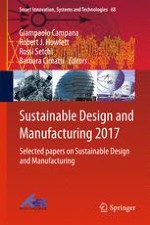This volume includes papers presented at the 4th International Conference on Sustainable Design and Manufacturing (SDM-17) held in Bologna, Italy, in April 2017. The conference covered a wide range of topics from cutting-edge sustainable product design and service innovation, sustainable processes and technology for the manufacturing of sustainable products, sustainable manufacturing systems and enterprises, decision support for sustainability, and the study of the societal impact of sustainability including research for circular economy. Application areas are wide and varied, and the book provides an excellent overview of the latest research and development in the area of Sustainable Design and Manufacturing.
